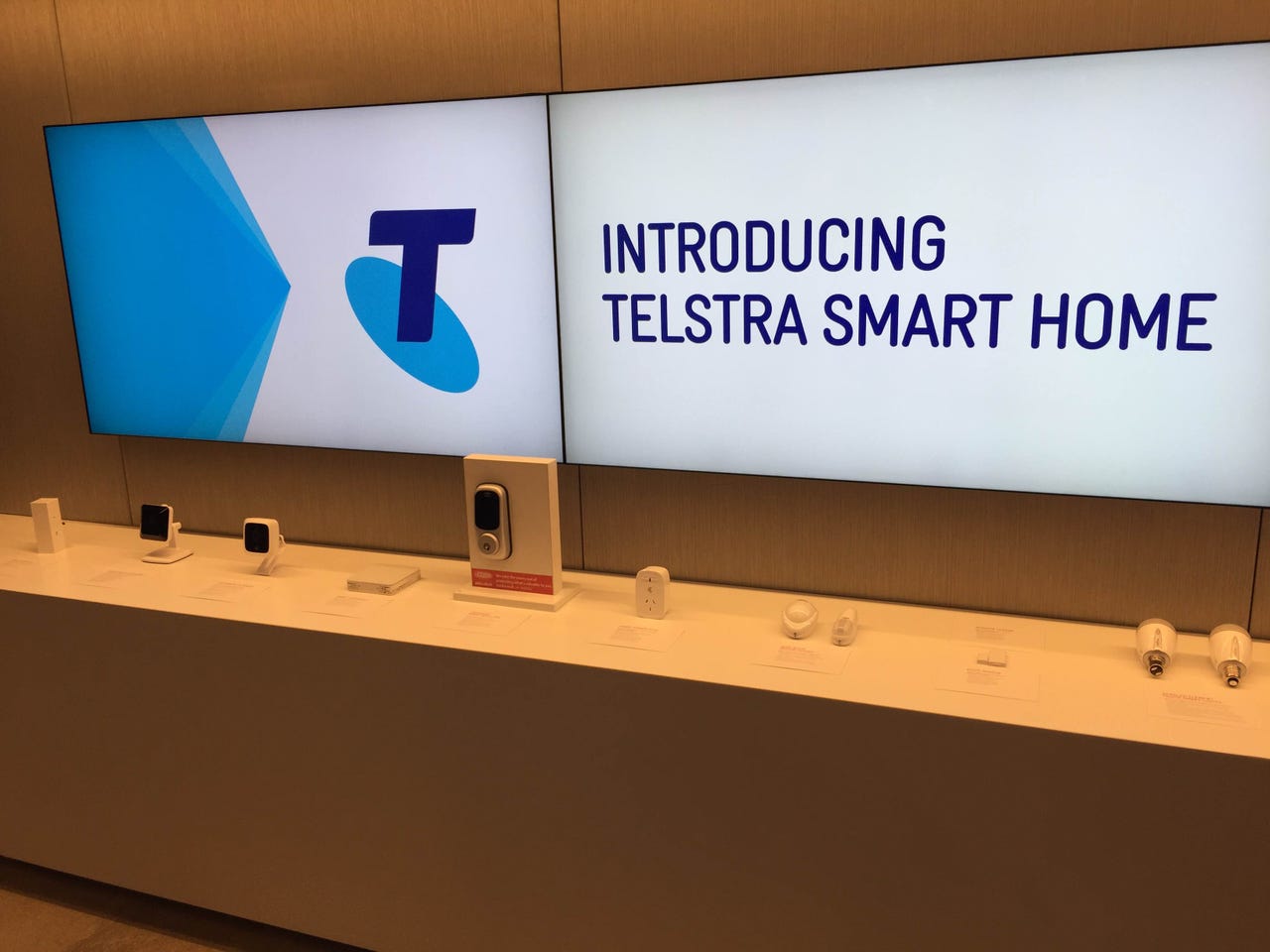Telstra unveils its Smart Home hub

Telstra has unveiled the Telstra Smart Home hub alongside 10 smart devices for the home, with the product "targeting every Australian" to launch later this year.
The product effectively works as a hub to control Internet of Things (IoT) devices in the home, controlled through an app across smartphones and tablets.
Telstra showcased a smart lightbulb, a window sensor, a door sensor, wide-beam motion sensors, a smart power plug, the Lockwood smart door lock, a smart thermostat, an outdoor Wi-Fi camera, an indoor Wi-Fi camera, and the Smart Home hub itself.
Telstra's smart home devices.
"There are 10 devices that we're launching today, and there's dozens more that we're assessing, but it's not really about those devices as about the automations and the connections and the curation that happen between those devices to create experiences in the home that enhance the lives of our customers," John Chambers, executive director of Home and Premium Services, explained.
"We're doing it with one app, and there'll be a hub at the centre of it ... the Telstra Smart Home hub will be at the centre of every solution, every package."
There will be two packages available at launch, Chambers said: A "Watch and Monitor" package and an "Automation and Energy" package.
"The launch packages are based on research we've done. The two are a Watch and Monitor package, which will include the smart hub, door, and window sensors as well, and a motion-sensing camera that allows you to watch what's going on at home," he said.
"The other one is the automation and energy package, another really important set of solutions for our customers being able to manage energy at home. That will include again door and window sensors, smart plugs, as well as motion sensors that allow you to track movement and turn things on and off as people come and go from the home."
The packages will be offered on a 24-month signup basis and paid month by month at "a really attractive price point".
The monthly payments will provide customers with a "core set of devices", a service layer including help from Telstra, and home connectivity.
Latest Australian news
"We see it growing to be effectively a new network that customers will be interacting with, and we see that the revenue growth potentially coming along with that," Chambers added.
Cynthia Whelan, group executive of International and New Businesses, said Telstra Smart Home is coming in at a time when IoT is growing in terms of both device numbers and revenue.
"Today, the average Australian household has about nine connected devices, and it's forecast that by about 2020, which is only three and a half years away, the average number of connected devices in Australian homes will be closer to 30," Whelan said on Wednesday morning.
"In the next five years, it's been forecast that the smart home industry in Australia is going to be worth more than AU$1 billion annually. When you take into account the home services market, which is already around about AU$50 billion per annum, and the potential for disrupting that market is significant, so when you put the two together, they're quite conservative numbers about where the market might grow to."
Most smart devices provided through the packages by Telstra will be under warranty for the duration of a customer's subscription, with the telco expecting to have hundreds of devices compatible closer to launch, including Apple's HomeKit.
In developing, choosing, and rolling out the smart devices, Telstra signed a five-year exclusive partnership with Icontrol Networks.
"Icontrol have tens of millions of devices connected through automation and security solutions around the world," Chambers said.
"We're really excited about the partnership with Icontrol, it's an exclusive one in Australia, and it enables us to have a flexible platform, one that can bring in multiple devices and other platforms into it over time as we work with other customers to see what really will work in Australia.
"It will be targeting every Australian."
Telstra also plans to launch more energy and health-focused packages further down the track.
"[Telstra Smart Home] is also part of Telstra's diversification into being a technology company, and it also aligns with the interests we have in businesses like electronic health," Whelan said.
"There's also some exciting opportunities as we look forward in the energy space. We recently announced Telstra Energy, and some of the opportunities we're looking at is potentially dynamic energy management, and the work we're doing in Telstra Energy together with the work we're doing here in Telstra Home."
The health packages will be released after Christmas, potentially at the beginning of calendar 2017, Chambers said.
"What we see is the convergence of more telco-oriented e-health solutions with smart solutions, so we will be launching health-related packs on this platform that make ... e-health much more accessible and affordable to consumers than they are today."
In terms of the IoT network to be used into the future, Chambers pointed towards the narrowband (NB-IoT) network.
"We're more attracted to the narrowband IoT spectrum with our partner Ericsson, and that's the beauty of the smart home platform: We will be working with connected car, sensors, trackers, narrowband etc. All of those will interact with this platform."
While there is an opportunity to expand the smart home solution into Telstra's overseas markets, Whelan affirmed that the telco will be looking to ensure the product works well in Australia first.
